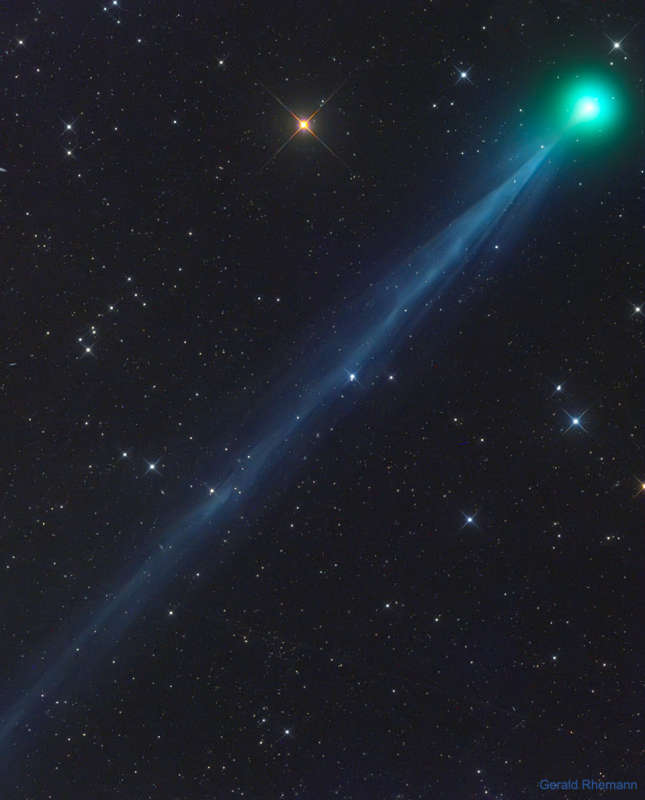Credit & Copyright: Gerald Rhemann
Explanation:
Newly discovered Comet SWAN has already developed an impressive tail.
The comet came in from the outer
Solar System and has just passed inside the
orbit
of the Earth.
Officially designated
C/2020 F8 (SWAN),
this outgassing interplanetary iceberg will pass its closest to the
Earth on May 13,
and closest to the
Sun
on May 27.
The comet was
first noticed in late March by an astronomy enthusiast
looking through images taken by NASA's Sun-orbiting
SOHO spacecraft,
and is named for this spacecraft's
Solar Wind Anisotropies
(SWAN) camera.
The featured
image, taken from the
dark skies in
Namibia in mid-April, captured
Comet SWAN's
green-glowing coma and unexpectedly long, detailed, and
blue ion-tail.
Although the brightness of comets are notoriously
hard to predict, some models have Comet SWAN becoming
bright enough
to
see with the unaided eye during
June.
Experts Debate:
How will humanity first discover
extraterrestrial life?
1999 2000 2001 2002 2003 2004 2005 2006 2007 2008 2009 2010 2011 2012 2013 2014 2015 2016 2017 2018 2019 2020 2021 2022 2023 2024 2025 |
Январь Февраль Март Апрель Май Июнь Июль Август Сентябрь Октябрь Ноябрь Декабрь |
NASA Web Site Statements, Warnings, and Disclaimers
NASA Official: Jay Norris. Specific rights apply.
A service of: LHEA at NASA / GSFC
& Michigan Tech. U.
|
Публикации с ключевыми словами:
comet - кометы - кометные хвосты
Публикации со словами: comet - кометы - кометные хвосты | |
См. также:
Все публикации на ту же тему >> | |
